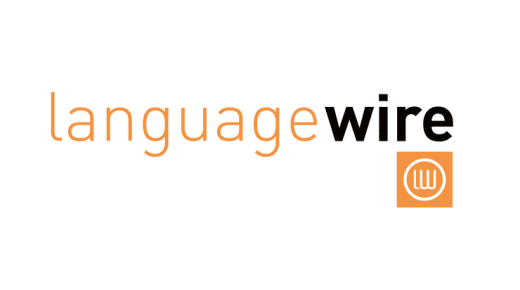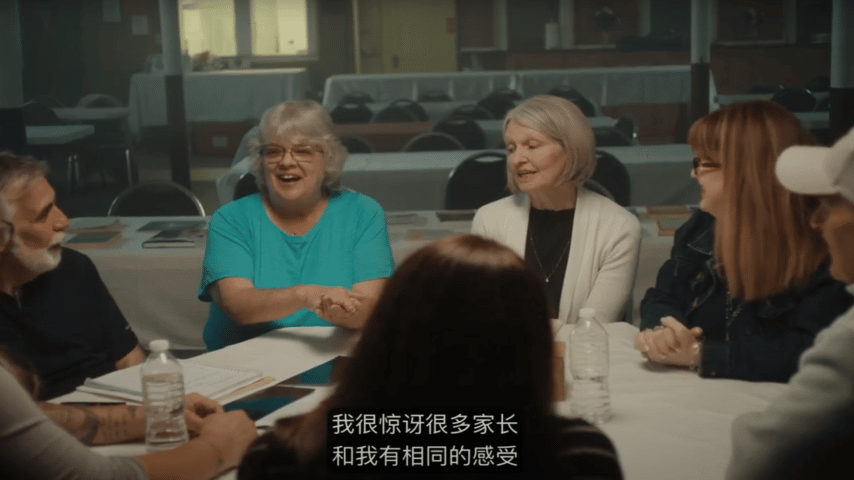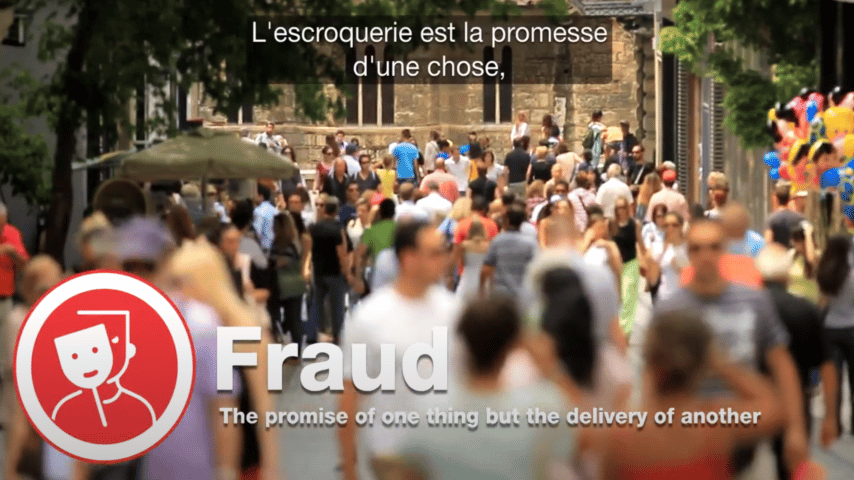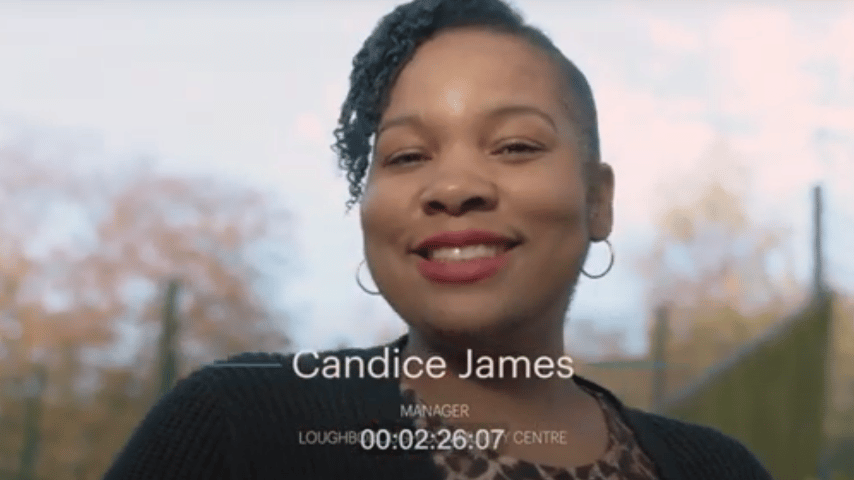Professional Subtitling and Captioning Services
Expand your reach with professional subtitles and captions. Clear, engaging, and culturally spot-on subtitles and captions ensure your content resonates. Whether it’s TV, film, corporate videos, or eLearning, your subtitles and captions make every word count.
Let's get started!
Leading Subtitling and Captioning Services
Add subtitles to a variety of content, including business presentations, corporate and educational videos, e-learning courses, feature films, promo videos and many more (take a look at our Subtitling rates Guide.).
Whether you have one video or many, we can help. You’ll get an all-inclusive, cost-effective and hassle-free subtitling solution.
We work with a global network of professional subtitlers, but you deal directly with us and can trust us to deliver your project to your specifications.
Our in-house subtitlers and project managers are equipped with industry-standard subtitling software and will thoroughly check all subtitle files before delivery, so you don’t need to worry.


With more than 15 years’ experience in the subtitling field you are in safe hands. Rest assured you’ll receive accurately timed and perfectly translated subtitles!
Whether you are a corporate client or a translation or production company, we’ll adapt to your needs so that you can add video translation services to your portfolio of services.
We are only a call or email away or, if you prefer, you can visit our get-a-quote page to discuss your subtitling project in detail. You’ll receive spot-on subtitles to suit your project and needs.
Benefits of using GoLocalise as your subtitling and captioning service provider

WOW your clients with first-class English and foreign language subtitles.

Stringent quality control processes – subtitling templates created and checked in-house, and timed to professional standards.


Experienced native subtitlers able to translate the meaning whilst respecting the style and space constraints specific to subtitling.

All translations are thoroughly quality checked by our experienced project managers before final delivery.

You’ll receive ready-to-use videos with burnt-in subtitles (open captions), ready to upload to your website. Customise the font, size, colour, and positioning to match your brand.

Subtitles that toggle on and off in multiple languages—closed captions—ready for YouTube, Vimeo, streaming platforms, DVD, or Blu-ray.

On-screen text and captions can be translated and graphically edited, delivering a flawless foreign language version.

Reach a wider audience with Closed Captions and SDH subtitles.
Why choose us?

You deserve the best!
Leave your project to the experts at GoLocalise so that you can relax and be assured of getting top-notch results.
Every single detail will be analysed, studied and looked
after so that you do not need to worry. Some would say it’s not too classy to blow our own trumpet… but we just like to point out two very important details.
We have achieved ISO 9001 Quality Management certification in recognition of our consistent performance and high standards, and ISO 14001 Environmental Management because we care about our planet!
And if you are still curious and want to know more about us, why not have a look at our studio page.
Professional Subtitling Formats
Whether you want English subtitles or foreign language subtitles, GoLocalise is the answer! We can adapt and time your own translation into subtitle format or create foreign language subtitles in any language from scratch, including English subtitles and SDH (Subtitling for the Deaf and Hard-of-Hearing).
You can choose to receive your subtitles in over 40 formats, including: AQT, ASC, ASS, CIP, DAR, DAS, DAT, DKS, FDX, FPC, HTML, JS, JSS, LRC, MPL, MTL, OVR, PAC, PAN, PJS, RT, RTF, S2K, SAMI, SBT, SBV, SCC, SIF, SMI, SON, SRF, SRT, SSA, SST, SSTS, STL, STL, STP, SUB, TTS, TXT, USF, VKT, VSF, VTT, XML and ZEG.
We work with you so that you get the perfect subtitles to suit your needs.
Caption & Graphic Editing
When localising and translating videos (whether you choose subtitling or voice over), you’ll find that often there are several elements that need to be localised. These elements can be on-screen graphics, text and/or captions.
Our expert project managers will review the video or project file and advise which elements would be best subtitled or graphically edited.
If you do not have the project files, worry not; one of our expert editors will be able to re-create the graphics, captions and titles of your video.
Our expert editors work with a multitude of software: to localise graphics we use Photoshop or Illustrator; and After Effects and Final Cut Pro to create motion graphics and visual effects.
Once all elements are in the video, and the graphic elements have been created and localised, we can then rebuild the video and export it to whichever format and codec you need.
We’ll prepare your video project for any platform, including PAL, NTSC, VOD, the Internet, smartphones, game consoles, mp3 players and tablets.
With our facilities and highly skilled operators, your videos are in safe hands!

We work with most formats, but check if a specific one’s needed. If needed, we’ll convert it for you.

If subtitles are needed in multiple languages, we first create an English template for translation.

The English template is sent to professional linguists to ensure accurate and natural translations.

The translated subtitles are added to our software, checked for accuracy, and adjusted as needed.

We ensure subtitles are clear, readable, and meet timing and formatting standards.

If needed, we refine the subtitles to ensure they meet quality standards before final approval.

You review the subtitles and request changes, which we apply where possible.

If requested, we embed the final subtitles into your video for a seamless viewing experience.

Your completed video is securely delivered via a link to our GoLocalise portal for easy access.
Learn more about Subtitling & Captioning Services
Let's get started!

Working Alongside Translation & Production Companies
Having a trusted subtitling partner makes all the difference!
Having a trusted subtitling partner makes all the difference. With GoLocalise, you get an experienced team that works seamlessly with translation and production companies, delivering high-quality subtitles in any language. We handle the technical nuances of timing, readability, and formatting, ensuring your subtitles are accurate, well-paced, and visually synchronised with your video.
Our dedicated project managers guide you through the entire process, explaining everything clearly without technical jargon. You can focus on growing your business while we take care of the subtitling process from start to finish. Whether you need burned-in subtitles, editable files, or multilingual versions, we make it simple.
For translation companies, we provide clear guidelines so you can supply your own translations for us to adapt into subtitles—or we can handle the entire process for you. For production companies, we deliver subtitles in any language and format, whether burned into the video or supplied as XML, SRT, or PNG files—fully compatible with Adobe After Effects, Final Cut Pro, and other leading editing software.
With GoLocalise, you get more than just subtitles—you get a reliable, experienced team that ensures your content is clear, accessible, and perfectly formatted, no matter the language or platform.
Reach Your Target Market
Struggling to make your content truly global? Poorly executed subtitles can confuse audiences, weaken your message, and even drive viewers away. At GoLocalise, we remove the stress by providing clear, accurate, and professionally timed subtitles that ensure your content connects with every audience, no matter the language.
Whether it’s films, corporate videos, eLearning courses, or social media content, our expert team ensures every subtitle is precisely timed, easy to read, and linguistically accurate. We handle all technical aspects—character limits, reading speeds, and formatting—so your subtitles look natural and enhance viewer engagement rather than distract.
With GoLocalise, you’ll have a dedicated project manager guiding you from start to finish, answering your questions, and making the process effortless. No technical headaches, no guesswork—just high-quality subtitling, delivered smoothly and on time.


Your Dedicated Project Manager – Making Subtitling Simple
Managing a subtitling project can feel overwhelming—tight deadlines, formatting issues, and ensuring accuracy across multiple languages. That’s where we come in. At GoLocalise, your project will be handled by a dedicated multilingual project manager who will oversee every step, ensuring a smooth and hassle-free process from start to finish.
We understand that subtitling isn’t just about translation—it’s about timing, readability, and technical precision. Your project manager will break everything down into clear, simple terms, guiding you through the process so you only pay for what you need. Whether you require burned-in subtitles, multiple language versions, or a specific subtitle format, we ensure you receive exactly the right service without unnecessary complications.
Need a quick turnaround? Worried about file compatibility? Unsure how to balance accuracy and readability? We take care of it all. Your project manager will ensure perfect subtitle timing and maintain consistency across all translations, so your content is polished and professional.
With GoLocalise, you get expert guidance, seamless communication, and a stress-free experience—all at competitive prices. Once you work with us, you’ll wonder why you didn’t sooner. 🚀
Your content deserves precise, professional subtitles—and we make the entire process simple, stress-free, and seamless. Struggling with tight deadlines? Worried about formatting issues? Need subtitles that look natural and read effortlessly? We’ve got you covered.
At GoLocalise, we use industry-leading subtitling software to deliver perfectly timed, readable, and accurately translated subtitles. We handle all the technical aspects—character limits, line breaks, and reading speeds—so you don’t have to. No matter your platform—broadcast, streaming, corporate, or social media—we optimise subtitles to match Netflix, YouTube, TV stations, and eLearning platforms’ exact specifications.
Need burned-in subtitles? We provide high-resolution, ready-to-use video files. Prefer editable subtitle files? We deliver SRT, VTT, STL, XML, and more, tailored to your workflow. With GoLocalise, you get expertly crafted, hassle-free subtitles that make your content accessible, engaging, and truly global—without the headaches.
🚀 Let us take care of everything—fast, accurate, and hassle-free. 📩 Get a quote today and make subtitling effortless.

Learn more about Subtitling & Captioning Services
Let's get started!
What our happy customers say
Adam Ruddick
Head of Production at Casual Films

Thomas Kennedy
Designer at Atlas Knowledge

Marion Hirst
Translation Project Manager at Language Wire

Philippa Strandberg-Long
Deputy Course Leader - Acting, Italia Conti
Patricia Leon-Fedorko
Account Specialist at Advanced Language

Kerry Gillies
Director at Synergy Language Services

Frequently Asked Questions
Engaging a professional subtitling agency is not just an investment in enhancing content; it’s a strategic move with multifaceted benefits that cater to a globalised digital landscape.
Broadened Accessibility:
At the forefront, these agencies champion inclusivity. By adding subtitles, your content becomes accessible to a larger demographic, including the hearing-impaired. In a world that’s increasingly sensitive to inclusivity, this move doesn’t just enhance reach; it also demonstrates a brand’s commitment to serving diverse audiences.
Linguistic Expertise:
Professional subtitling goes beyond mere transcription. With agencies, you’re leveraging the skills of seasoned linguists. These experts grasp the intricate nuances of various languages, ensuring that subtleties, cultural contexts, and idiomatic expressions are aptly captured. This meticulous attention to detail guarantees that the message retains its essence across different languages.
Global Reach:
In an interconnected world, content knows no boundaries. By localising content, agencies ensure that videos resonate with audiences across continents. Whether it’s tailoring subtitles to American English or Brazilian Portuguese, localisation ensures cultural relevance, making content feel both familiar and engaging to diverse viewers.
SEO and Discoverability:
Beyond the immediate viewing experience, subtitling can be a potent tool for digital discoverability. By integrating relevant keywords within subtitles, agencies can enhance a video’s SEO. This optimisation ensures that content ranks higher on search engines, drawing in a broader audience and increasing view counts.
Quality and Precision:
Accuracy is paramount in subtitling. Professional agencies maintain rigorous quality checks, ensuring that subtitles align perfectly with on-screen dialogue and visuals. This synchronisation heightens the viewer’s comprehension and immersion, ensuring they remain engaged throughout.
In summary, by opting for a professional subtitling agency, content creators and brands significantly amplify their video content’s impact, ensuring it’s poised for global success.
Absolutely. A seasoned subtitling agency offers more than mere translation; it’s about making content globally resonant.
Translation Depth:
At its core, translation is about capturing the essence of content, ensuring linguistic fidelity while maintaining the content’s tone and style.
Localisation and Cultural Resonance:
Beyond translation lies localisation, a process of adapting content to fit cultural nuances. It ensures the content feels familiar, tapping into local idioms, traditions, and societal norms.
Enhanced Engagement and SEO:
When content is both translated and localised, it appeals more broadly, leading to increased viewer engagement. This heightened interaction not only amplifies viewer experience but also boosts the content’s discoverability and SEO footprint in varied markets.
In summary, through expert translation and localisation, a subtitling agency ensures content is both accessible and relatable to global audiences.
Subtitling services go far beyond merely putting text on screen. They encompass a range of offerings designed to make video content accessible, engaging, and culturally relevant to a diverse audience.
Firstly, expect expertise in multiple languages. Global content demands global reach, and professional subtitling services often provide translation and localisation in a myriad of languages.
Customisation is another key offering. Every brand and content creator has a unique voice and style. Subtitling services should be flexible enough to capture and convey that uniqueness, be it through tailored subtitle styles or specific linguistic choices.
Lastly, technological prowess is paramount. The best subtitling services utilise cutting-edge software and tools to ensure precision, consistency, and rapid turnaround times. From AI-driven transcription services to cloud-based collaboration tools, technology plays a pivotal role in delivering top-notch subtitles.
The journey from raw video to perfectly subtitled content is intricate. It starts with transcription, where every spoken word is documented. This transcript serves as the foundation upon which subtitles are built.
Next comes segmentation, where the transcript is divided into bite-sized chunks, perfect for viewer consumption. Translation follows if the content is intended for multilingual audiences, ensuring cultural and linguistic appropriateness.
Synchronisation is the phase where precision truly counts. Here, the subtitles are timed perfectly to match on-screen dialogue. This meticulous process ensures viewers have enough time to read and comprehend each subtitle as they listen.
Quality checks round off the process. Here, professionals review the subtitles for accuracy, synchronisation, and adherence to guidelines. This final touch ensures the end product is polished and of the highest standard.
Automated tools, while convenient, often miss the mark when it comes to capturing the nuance, tone, and cultural context of content.
A professional subtitling agency, on the other hand, combines the efficiency of modern technology with the irreplaceable touch of human expertise. Every piece of content is meticulously reviewed by a team of linguists who bring in-depth knowledge of both the language and its cultural intricacies. This ensures that the subtitles aren’t just accurate, but also contextually relevant, providing a richer viewing experience. Ultimately, choosing an agency guarantees a perfect blend of accuracy, context, and digital strategy, which automated tools can’t replicate.
Both open and closed captions provide a textual representation of video audio, but they serve different purposes and have distinct usability features.
Open captions are permanently embedded into a video, making them consistently visible whenever the video plays. Being a part of the video image itself, they can’t be turned off by the viewer.
In contrast, closed captions can be toggled on or off based on the viewer’s preference. Unlike open captions, they aren’t hard-coded into the video. Instead, they exist as a separate track, allowing players or platforms to display them as needed.
Subtitles, while similar in concept, primarily focus on translating spoken dialogue for viewers who might not be familiar with the video’s primary language. They operate on the assumption that the viewer can hear the video but needs textual support for understanding the dialogue.
When choosing among these options, it’s essential to consider both your audience’s needs and the platforms where your content will be showcased. Each option offers a unique way to enhance accessibility and engagement, depending on the context.
Subtitle accuracy is pivotal to viewer engagement and understanding. Here’s how an agency achieves it:
Combining Technology and Talent: While cutting-edge software helps in aligning the audio with the text, the real magic lies in human touch. Our experienced linguists play a crucial role in refining these automatically generated subtitles.
Contextual Understanding: Our experts dive deeper than just the words. They grasp the context, essence, and tone of the content, ensuring subtitles mirror the video’s intent.
Thorough Review: Before finalising, subtitles undergo rigorous checks. This meticulous verification process ensures viewers receive accurate and coherent information.
In sum, through a blend of technology and expert oversight, a subtitling agency ensures viewers enjoy accurate, clear, and contextually apt subtitles.
Subtitle consistency is paramount for maintaining a smooth and engaging viewer experience. Consistency in subtitling refers to maintaining a uniform style, presentation, and timing throughout the video content. This encompasses font, size, colour, and even the phrasing or terminology used.
Inconsistent subtitles can disrupt a viewer’s immersion, making them more aware of the subtitles than the content itself. Such disruptions can be as simple as varying font sizes or as complex as inconsistent translations of specific terms.
Ensuring consistency provides viewers with a seamless experience, allowing them to fully engage with the content without being jolted by irregularities in the subtitles. A professional subtitling agency maintains strict quality control to ensure such consistency across all projects.
Handling multiple languages and dialects demands a blend of linguistic expertise and cultural sensitivity. A proficient subtitling agency will typically have a diverse team of native linguists and translators who are experts in their respective languages and dialects.
Each language, and often each dialect within a language, carries its unique nuances, idioms, and cultural contexts. A mere literal translation would miss these intricacies, potentially leading to misunderstandings or misinterpretations.
Handling multiple languages and dialects demands a blend of linguistic expertise and cultural sensitivity. A proficient subtitling agency will typically have a diverse team of native linguists and translators who are experts in their respective languages and dialects.
Each language, and often each dialect within a language, carries its unique nuances, idioms, and cultural contexts. A mere literal translation would miss these intricacies, potentially leading to misunderstandings or misinterpretations.
To tackle this, a subtitling agency ensures that content is not only translated accurately but also localised. Localisation ensures that content resonates with the target audience’s cultural and regional sensibilities. By doing so, the agency ensures that subtitles are both linguistically accurate and culturally relevant, providing a genuine experience to viewers across different regions.
The format of subtitles plays a crucial role in determining their compatibility with various platforms and players. Different video platforms, be it streaming services, media players, or broadcast systems, may support different subtitle file formats. Some common formats include SRT, ASS, VTT, and many others.
Choosing the wrong format can result in subtitles not displaying correctly or, in some cases, not showing up at all. For content creators, ensuring compatibility means a wider audience can engage with the content as intended. Conversely, neglecting this can hinder viewer experience and limit accessibility.
A professional subtitling agency is well-acquainted with these intricacies. They ensure that the subtitle format aligns with the intended distribution platforms, guaranteeing seamless integration and optimal viewer experience.
“Burning in” subtitles means that the subtitles become a fixed part of the video imagery. Unlike optional subtitles which can be switched on or off by viewers, burned-in ones are always displayed and cannot be removed.
You might choose to burn in subtitles for several reasons:
Platform Constraints: Not all platforms support detachable subtitle tracks. In such cases, burned-in subtitles become essential.
Uniform Message Delivery: Burning in guarantees that all viewers, regardless of device or settings, get the intended message without distractions.
Promotion & Marketing: It’s especially favoured for trailers and adverts. Here, creators want a consistent viewer experience without the variable of adjustable settings.
In essence, if you want a standardised viewing experience and message delivery, especially on platforms with subtitle limitations or for promotional content, burning in subtitles is a practical choice.
On-screen graphics, whether they’re logos, text, or other essential visuals, are pivotal in determining the position of subtitles within a video. It’s imperative that these elements, which often convey crucial information or branding, are not obscured by subtitles. In this context, a professional subtitling agency takes two main approaches:
Strategic Positioning: They ensure subtitles are positioned such that they’re easy to read for viewers, but they never overshadow important graphics.
Adaptive Adjustments: As video content evolves, subtitles may not always remain in a static location. They are dynamically moved or adjusted based on what’s visually prominent at any given moment to prevent covering vital information.
A professional approach to subtitling ensures that both the video’s graphic elements and the accompanying subtitles are clear and discernible, guaranteeing viewers a smooth and comprehensive viewing experience.
Subtitling guidelines act as the backbone for ensuring high-quality and consistent subtitles across various types of content. They’re designed to enhance readability, comprehension, and the overall viewer experience.
Each set of guidelines tackles crucial elements like the maximum number of characters per line, the duration a subtitle should remain on screen, and how to convey non-dialogue audio cues. Moreover, cultural nuances and idiomatic expressions are also considered to ensure the message’s intended meaning isn’t lost in translation.
Following these guidelines is particularly crucial for content aimed at a global audience. By adhering to a standardised set of practices, content creators and distributors can ensure that their message is consistently conveyed, irrespective of the viewer’s region or language.
The realm of subtitling encompasses a range of services, each with its own set of pricing considerations. Typically, the length and complexity of the content play a primary role in cost determination. A longer or more intricate dialogue naturally demands more time and expertise.
Additionally, the number of languages required can influence the overall price. Translation and localisation for multiple languages involve more resources. Specific services, such as direct translation or the creation of subtitles from scratch, can also vary in pricing.
Lastly, the turnaround time requested by a client can impact the cost. Urgent projects that require a swift delivery often come at a premium, given the intensified workload and focus they demand.
Subtitling styles refer to the visual aesthetics and presentation of the subtitles on screen. This encompasses font choices, sizes, colours, and even the positioning of the subtitles relative to on-screen action.
Different content types may demand varied styles. For instance, a corporate video might opt for a neutral font with subtle colours, while a kid’s show might embrace brighter hues and larger fonts. The style can influence viewer engagement, ensuring the content is both accessible and appealing.
Customisation is a significant aspect here. Brands often want subtitles that align with their brand guidelines, ensuring a consistent viewing experience that resonates with their identity.
The Complete Solution To Adapt Your Content
Looking to get your entire project under one roof? Look no further, we can help you make life easier for you!

- Neumann Microphones
- On-hand Sound Engineers
- Talented Voice Over Actors
- State-of-the-art Recording Studios

- Tailored to Your Business
- Stringent Quality Control Process
- Laser-Focused Project Managers
- Global Network of 600+ Languages

- Professional Subtitlers
- Open/Closed Captions & Web
- Industry-Standard Software
- Subtitle Burn-in & Graphic Editing

- Improve accessibility
- Reach a wider audience
- Increased SEO and video views
- Maximise your video's engagement




















